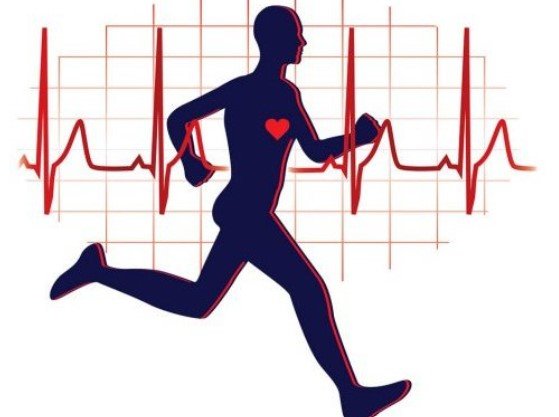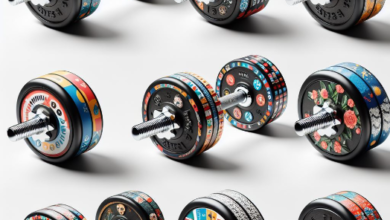Comprehensive Guide to Testing Your Fitness Level: Strategies and Assessments for Optimal Health
Introduction
In the pursuit of a healthier and more active lifestyle, understanding and evaluating your current fitness level is a crucial first step. This comprehensive guide aims to provide you with a detailed roadmap for self-assessment, incorporating a variety of tests to measure different aspects of fitness. From cardiovascular endurance to strength, flexibility, and body composition, these assessments offer valuable insights that can guide your fitness journey. Let’s explore each facet of testing your fitness level in detail.
1. The Significance of Fitness Assessment

Assessing your fitness level is more than just a numeric measurement; it’s a dynamic process that empowers you to make informed decisions about your health and wellness. A comprehensive assessment serves as a baseline, allowing you to set realistic goals, track progress, and tailor your fitness routine to address specific areas of improvement.
2. Cardiovascular Endurance Assessment

2.1 The 1-Mile Run or Walk Test
Procedure:
- Choose a flat and measurable route.
- Warm up adequately before starting.
- Run or walk one mile as quickly as possible.
Interpretation:
- Faster completion times indicate better cardiovascular endurance.
- Compare your time to age-specific norms for a more accurate assessment.
2.2 The 3-Minute Step Test
Procedure:
- Use a sturdy step or bench.
- Step up and down at a consistent pace for 3 minutes.
- Measure your heart rate immediately after completion.
Interpretation:
- A quicker heart rate recovery suggests better cardiovascular fitness.

3. Strength and Muscular Endurance Assessment
3.1 Push-Up Test
Procedure:
- Execute as many push-ups as you can while maintaining proper form.
- Ensure a straight line from head to heels during the movement.
Interpretation:
- The number of push-ups completed correlates with upper body strength and muscular endurance.
- Compare your performance to age and gender-specific norms.
3.2 Plank Test
Procedure:
- Assume a plank position with elbows directly below shoulders.
- Hold the position for as long as possible, maintaining a straight line from head to heels.
Interpretation:
- A longer plank duration indicates better core strength and stability.
4. Flexibility Assessment
4.1 Sit and Reach Test
Procedure:
- Sit with legs extended and reach towards your toes.
- Measure the distance reached or observe the alignment of a marked ruler.
Interpretation:
- Greater flexibility is indicated by a longer reach.
- Focus on stretching exercises to improve flexibility over time.
Building muscle involves more than just lifting weights; it requires a strategic approach to selecting the right weights for your fitness level and goals. Whether you’re a beginner or an experienced lifter, understanding how to pick the right weights is crucial for maximizing muscle growth and minimizing the risk of injury. In this comprehensive guide, we’ll explore the key factors to consider when choosing weights to build muscle effectively.
5. Body Composition Assessment
5.1 Body Mass Index (BMI) Calculation
Procedure:
- Calculate BMI using the formula: BMI = (weight in kilograms) / (height in meters)^2.
- Interpret the result based on BMI categories.
Interpretation:
- BMI provides a general indication of body fat percentage.
- However, it may not account for muscle mass, so consider additional assessments.
5.2 Waist-to-Hip Ratio
Procedure:
- Measure the circumference of your waist and hips.
- Calculate the ratio by dividing waist circumference by hip circumference.
Interpretation:
- A lower ratio is associated with lower cardiovascular risk.
6. Flexibility Assessment
6.1 Sit and Reach Test
Procedure:
- Sit with legs extended and reach towards your toes.
- Measure the distance reached or observe the alignment of a marked ruler.
Interpretation:
- Greater flexibility is indicated by a longer reach.
- Focus on stretching exercises to improve flexibility over time.
7. Lifestyle and Activity Assessment
7.1 Daily Activity Journal
Procedure:
- Keep a journal of your daily physical activities.
- Include details such as type, duration, and intensity of exercise.
Interpretation:
- Analyze your activity patterns and identify areas for improvement.
- Aim for a balanced combination of cardiovascular, strength, and flexibility exercises.
8. Seeking Professional Guidance
While self-assessment provides valuable insights into your fitness level, seeking professional guidance adds a layer of precision and expertise to your evaluation. Fitness professionals, including certified personal trainers and healthcare providers, can offer in-depth assessments and recommendations tailored to your individual needs. Here’s a closer look at how professional guidance can elevate your fitness evaluation:
8.1 VO2 Max Testing
Procedure:
- VO2 max testing measures the maximum amount of oxygen your body can use during intense exercise.
- Typically conducted on a treadmill or stationary bike, you wear a mask to analyze your breath and oxygen consumption.
Benefits:
- Accurate assessment of cardiovascular fitness.
- Personalized exercise intensity recommendations for optimal training.
8.2 Body Composition Analysis
Procedure:
- In-depth analysis using methods like Dual-Energy X-ray Absorptiometry (DEXA), bioelectrical impedance, or skinfold calipers.
- Measures body fat percentage, lean muscle mass, and bone density.
Benefits:
- Precise understanding of your body composition.
- Tailored nutrition and exercise recommendations.
8.3 Movement and Posture Assessment
Procedure:
- Evaluation of your movement patterns, joint mobility, and posture.
- Identifying any imbalances or limitations that may contribute to injury.
Benefits:
- Customized exercise programs to address specific movement issues.
- Injury prevention strategies for long-term fitness success.
8.4 Functional Movement Screening (FMS)
Procedure:
- Series of movements to assess flexibility, stability, and mobility.
- Identifies asymmetries and weaknesses in fundamental movement patterns.
Benefits:
- Pinpoints areas of potential injury or dysfunction.
- Tailored corrective exercises to enhance movement efficiency.
8.5 Comprehensive Health Assessment
Procedure:
- Evaluation of overall health, including cardiovascular health, blood pressure, and cholesterol levels.
- May involve collaboration with healthcare professionals.
Benefits:
- Holistic understanding of your health status.
- Informed exercise recommendations considering any existing health conditions.
8.6 Goal Setting and Progress Tracking
Procedure:
- Collaborative goal-setting based on your aspirations and lifestyle.
- Regular progress assessments to adjust your fitness plan accordingly.
Benefits:
- Realistic goal setting aligned with your capabilities.
- Continuous motivation and accountability.
Choosing the Right Professional
When seeking professional guidance, it’s essential to choose qualified and certified individuals. Look for certifications from reputable organizations, experience in your specific fitness goals, and a commitment to ongoing education. Whether you opt for a personal trainer, fitness coach, or healthcare provider, ensure they have the expertise to guide you effectively.
Conclusion
In conclusion, regularly assessing your fitness level is not only a means of tracking progress but also a tool for empowerment on your fitness journey. By understanding your strengths and areas for improvement, you can tailor your exercise routine to align with your specific goals. Whether you’re striving for enhanced cardiovascular endurance, increased strength, improved flexibility, or effective weight management, a strategic and informed approach begins with a thorough fitness assessment. Take the time to evaluate your fitness level using the methods outlined in this guide, and embark on your fitness journey with clarity and purpose. Remember, your commitment to self-assessment is an investment in a healthier, more vibrant future.






